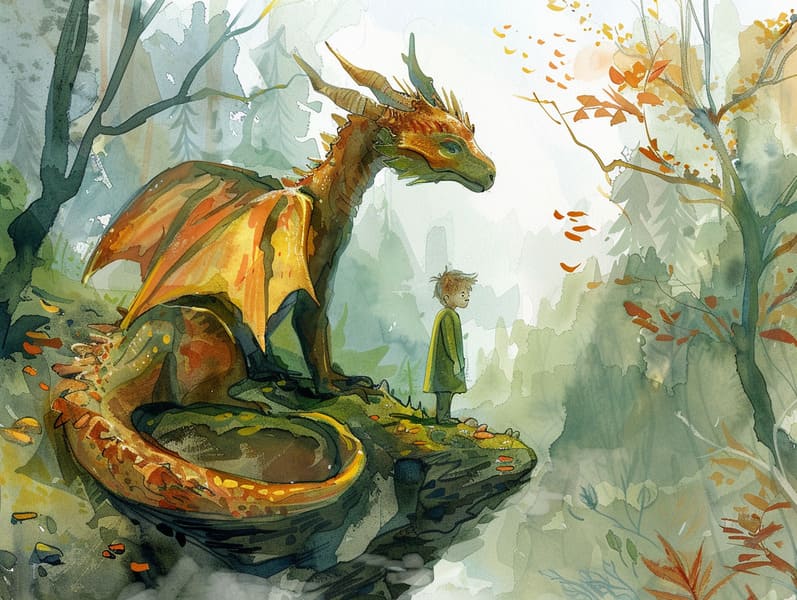Uncovering the Past of Short Fairy Tales with the Continued Loveliness.
Uncovering the Past of Short Fairy Tales with the Continued Loveliness.
Blog Article

Timeless fairy tales have long histories. These tales have been spoken from one generation to the next centuries before they were ever published. They arose from a variety of civilizations, including Indigenous traditions. They were initially transmitted among elders, often carrying themes and messages reflective of the societal norms and beliefs of the time.
The Grimm brothers, Jacob and Wilhelm Grimm, were among the first to compile and publish many of these beloved narratives. Their collection, "Grimm's Folk Tales," included stories like "The Story of Cinderella," "The Story of Hansel and Gretel," and "Snow White," which have since become classics in the world of children's fairy tales. Similarly, Hans Andersen's imaginative stories, such as "The Little Mermaid," and "The Ugly Duckling," have enchanted hearts worldwide, establishing their place in the pantheon of classic fairy tales.
Despite their age, fairy tales remain as pertinent as ever, especially as kids' bedtime tales. These delightful tales are now available in numerous formats, including artistically illustrated books, charming animations, and free fairy tales online.
Their persistent charm can be linked to several delightful features:
Vital Lessons: Timeless fairy tales often provide important moral lessons. Fairy tales like "The Boy Who Cried Wolf" teach the importance of sincerity, while "The Tortoise and the Hare" stress the traits of resolve and humility. These tales offer kids clear distinctions between correct and incorrect, helping to shape their moral compass in a tender yet impactful way.
Empathy and Understanding: Classic fairy tales frequently involve figures facing problems and hurdles, inciting young readers to empathize with their struggles and back their triumphs. For instance, "Beauty's Beast" emphasizes the value of valuing inner qualities to acknowledge the inner spirit of a character, developing compassion and recognition.
Cultural Knowledge: Many timeless fairy tales are deeply embedded in the cultural contexts from which they grew. Reading these tales can provide illuminating insights into different traditions, advancing a sense of cultural respect and comprehension.
Imagination and Innovation: The imaginative elements in fairy tales—wizardry and magic—motivate children’s dreaming abilities. These narratives guide readers to fantasy realms, inspiring imaginative ideas and a sense of delight that remains a lifetime.
Ancient fairy tales are not only bewitching but also educational. They act as alluring tools in building various intellectual and emotional capacities in young readers. When classic fairy tales are narrated, they strengthen language skills by introducing new language items and elaborate sentence structures. This practice also cultivates auditory perception and mindfulness, as children focus on every detail, ready to see what happens next.
Furthermore, examining the themes and characters of timeless fairy tales can develop thinking skills and reasoning skills. Kids are shown to detect patterns, predict happenings, and catch on to cause and effect. These reflections also ease the young articulate their thoughts and feelings, fostering their emotional intelligence.
In today’s modern era, the existence of internet fairy tales has made these tales more reachable than ever. Web platforms and applications extend vast collections of timeless fairy tales that can be seen or listened through anytime, anywhere. Fairy tales narrated are particularly in demand, providing an delightful method for children to experience these charming stories. Sound books and read-out-loud stories carry characters and settings to life, often paired with whimsical background sounds and instrumentals that augment the storytelling experience.
The timeless fascination of ancient fairy tales lies in their ability to modify to current times while continuing with their core messages. Contemporary versions of these stories often include more diverse figures and modern settings, making them pertinent to today’s audience. However, the core values of valor, kindness, and impartiality remain unchanged, continuing to influence listeners of all ages.
Classic fairy tales also offer a sense of familiarity and closeness. They highlight a well-arranged narrative with a evident beginning, middle, and end, often drawing to a close with the closure of conflicts and the triumph of good check it out over evil. This assuredness can be relieving for children, introducing a sense of solidity in an ever-changing world.
Timeless fairy tales continue to captivate and inform new generations, maintaining their grace and significance in modern society. As nighttime stories for kids, they extend a perfect blend of wonder and wisdom, developing moral values, empathy, and creativity. The availability of online fairy tales and the well-liked nature of fairy tales spoken ensure that these old tales remain reachable to new generations.
By protecting and spreading these stories, we continue to cherish the rich tapestry of fables and cultural heritage. Whether you are delving into a gorgeously illustrated book, delving into a virtual collection, or listening to an spoken story, the delight of children's fairy tales is always within reach. These narratives emphasize of the ageless impact of narratives and its ability to link us across generations and cultures.
Whether you are viewing a gorgeously illustrated book, viewing a web-based collection, or playing an audio story, the spell of ancient fairy tales is always within reach.
These stories emphasize of the consistent spell of narratives and its ability to connect us across centuries and lands, casting a charm that charms and informs alike.